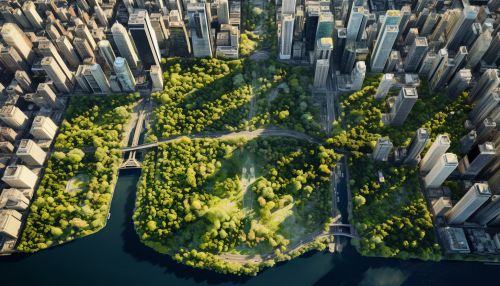Manhattan Island
Geography
Manhattan Island is located at the mouth of the Hudson River. It is one of the five boroughs of New York City, and is bordered by the Hudson River to the west, the East River to the east, and the Harlem River to the north. The southern tip of the island, known as Battery Park, faces the Upper New York Bay.


The island is known for its distinctive, grid-like street layout, which was designed in the early 19th century by the Commissioners' Plan of 1811. This plan laid out the streets of Manhattan in a grid pattern, with avenues running north-south and streets running east-west. This layout has had a significant impact on the development and character of the city.
History
Manhattan Island has a rich and varied history, beginning with its original inhabitants, the Lenape Native Americans. The island was first explored by Europeans in the early 17th century, when Henry Hudson, an Englishman sailing for the Dutch, arrived in the area. The Dutch subsequently established the colony of New Amsterdam on the southern tip of the island.
In 1664, the English seized control of New Amsterdam and renamed it New York, after the Duke of York. The city grew rapidly in the 18th and 19th centuries, becoming a major center for trade, finance, and immigration.
The 20th century saw Manhattan Island at the heart of several major historical events, including the construction of iconic structures such as the Empire State Building and the United Nations Headquarters, and the tragic events of September 11, 2001.
Architecture
Manhattan Island is renowned for its architecture, which ranges from the historic brownstones of Greenwich Village to the towering skyscrapers of Midtown. The island is home to numerous architectural landmarks, including the Flatiron Building, the Chrysler Building, and the One World Trade Center.
The island's architecture is also characterized by its high density, with many buildings reaching over 100 stories. This density is a result of the island's limited space and the high demand for real estate in the city.
Culture
Manhattan Island is a major cultural hub, home to numerous museums, galleries, theaters, and music venues. The island's cultural institutions include the Metropolitan Museum of Art, the Museum of Modern Art, the American Museum of Natural History, and the Lincoln Center for the Performing Arts.
The island is also known for its vibrant nightlife, with a wide range of bars, clubs, and restaurants. In addition, Manhattan hosts numerous cultural and artistic events throughout the year, including the New York Film Festival, the Tribeca Film Festival, and the New York Fashion Week.
Economy
Manhattan Island is a major economic center, home to the Wall Street financial district and many of the world's largest corporations. The island's economy is diverse, with sectors including finance, real estate, media, technology, and tourism.
The island is also a major retail destination, with numerous high-end shopping districts, including Fifth Avenue, Madison Avenue, and Soho.
Transportation
Manhattan Island is served by an extensive public transportation system, including the New York City Subway, numerous bus lines, and the Staten Island Ferry. The island is also home to several major transportation hubs, including Grand Central Terminal, Pennsylvania Station, and the Port Authority Bus Terminal.
